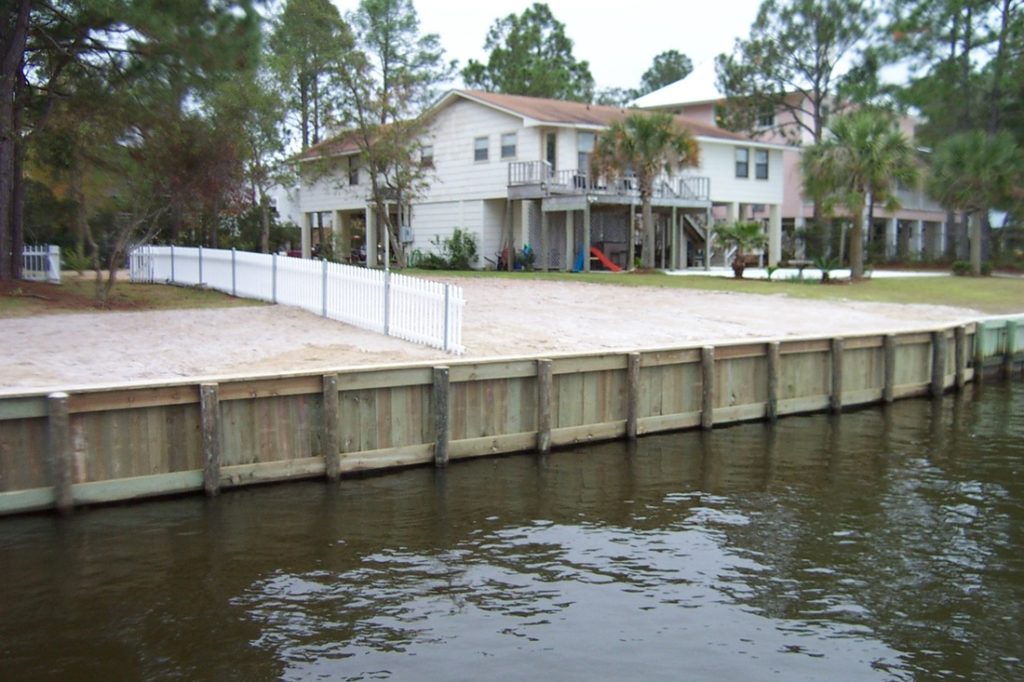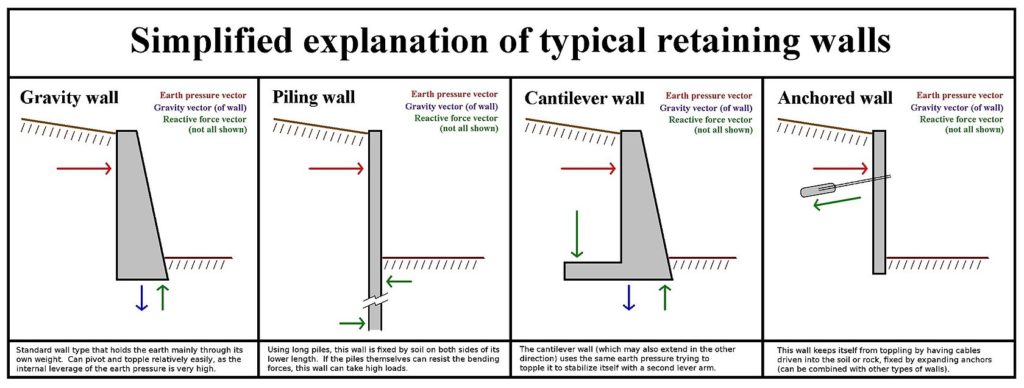Bulkheads, Seawalls and Retaining Walls
Bulkheads or Seawalls
Bulkheads, seawalls, and retaining walls are all engineered structures designed to manage and control the movement of water and soil in various coastal and inland environments. Each of these structures serves distinct purposes and possesses unique characteristics that make them suitable for specific applications.
Bulkheads are rigid vertical barriers constructed along the shoreline to prevent erosion and protect adjacent properties from wave action. They are typically made of concrete, steel, or timber and act as a buffer against the forces of water. The primary function of bulkheads is to stabilize the shoreline and preserve the land behind them. However, they can create adverse effects on the surrounding ecosystem, altering sediment transport and disrupting natural habitats.
Seawalls, on the other hand, are similar to bulkheads but are specifically designed to withstand the impact of waves and storms in coastal areas. They are usually taller and more massive, often made of concrete or reinforced steel. Seawalls offer enhanced protection against erosion and coastal flooding, safeguarding coastal infrastructure and properties. Despite their effectiveness in reducing immediate risks, they can exacerbate erosion in adjacent areas, leading to the loss of beaches and habitat degradation.
Retaining walls, while they may also be found in coastal regions, are primarily used in inland landscapes to prevent soil erosion and manage changes in elevation. These walls can be made from various materials such as concrete blocks, stone, or timber. Retaining walls are versatile and serve to create level platforms on sloped terrains, preventing landslides and controlling soil movement. However, their design must consider proper drainage to prevent water buildup behind the wall, which can cause structural failure.
In comparison, the key differences between these structures lie in their locations, purposes, and construction. Bulkheads focus on shoreline stabilization and property protection, while seawalls are engineered for coastal areas with intense wave action and storm surge. Retaining walls, on the other hand, are utilized in both coastal and inland settings to manage soil erosion and elevation changes.
Moreover, environmental considerations are essential when deploying these structures. Bulkheads and seawalls can have adverse effects on coastal ecosystems, altering sediment transport and affecting marine life. In contrast, retaining walls can integrate green infrastructure and landscaping techniques to minimize their impact on the environment.
In Conclusion
Bulkheads, seawalls, and retaining walls are all essential tools in civil engineering to manage water and soil movements. Their effectiveness and environmental impact depend on careful planning, design, and implementation, considering the specific needs of each location and ecosystem. Balancing human infrastructure needs with ecological preservation will ultimately lead to more sustainable coastal and inland development.


How we can help
From small lake waterfronts to large river estates, retaining walls can play many different rolls in the development of your property. Call today to learn more about our company and how we may be able to help you with your project.
